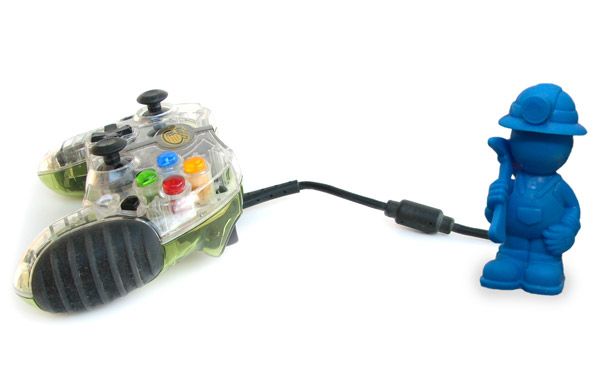Casual Crossover: Learning from the Casual Video Game Industry: Page 3 of 3

New and varied revenue models in game sales
Apple and Facebook have created totally new models for generating revenue from video games. This isn’t the first time we have seen a change — people originally paid for games with quarters, essentially renting the game for as long as the player could make it last. When Atari, Nintendo, and other home consoles were introduced, customers purchased the entire game for a set fee, and today that model still exists. However, rather than sell games for 50 to 60 dollars apiece (Wii $50, Xbox/PS3/PC $60), casual games from Apple and other companies are selling games designed for phones and portable devices for as little as 99 cents. The goal of these incredibly low-priced games is to sell a higher volume of them and to spend a lot less time and money developing them. Many casual games offer free downloadable trials, with the option to purchase the full game.
The Facebook model is completely different. These games are free to play, but companies make revenue from a small subset of customers who purchase additional or exclusive virtual objects within the game. By offering games for free or for very low prices, the casual video game industry has instantly broadened the audience willing to try their games.
The board game industry should also continue to consider new and innovative revenue models that echo those that have given the casual video game industry so much success. One possibility is to place compelling casual games, such as a playable starter deck, into users’ hands for free or for very low prices and earn the return on investment through game upgrades.
Demythologizing the market
If you asked an adult in 1985 the question “Who plays video games?” they would likely have answered “kids.” If you asked the same question in 1995, they might have said “kids and teenagers or young adults.” If you asked that question today, 68% of adults3 would say “I play video games.” Our perception of who plays games is a critical factor in how many games are sold and played.
When Nintendo was developing the Wii, which was fittingly titled the Revolution originally, one of the key questions they asked was how to move away from the stigma that video games are for children, and redefine the industry with games that are for everyone. Advertisements for the Wii showed families playing tennis together in their living rooms. After launch, Nintendo branched out into fitness games, and to date, Wii Fit is still the 3rd best selling console video game in history4. Advertisements showed adults, not children, working out by playing a video game; images like these resonate in the marketplace, and have done wonders to undo the antiquated and stereotypical perception that video games are toys played by children.
Nintendo also pushed advertisements that showed women playing the Wii both for fun and for exercise, and this kind of marketing was key in helping to overcome the myth that video games are a male-dominated market. Today, 47% of the game-playing population is female and, in fact, adult women represent a greater portion (30%) than boys age 17 or younger (18%).3
Changing the perceived stereotypes associated with gaming through marketing campaigns, cross-pollination with other industries, and a real focus on delivering simple games to all ages and genders helped the casual video game industry broaden its demographic.
In my observation, a large majority of children that were playing video games in the 1980s are still playing them as adults today. Many of those same children were also playing board games in the 1980s, yet they are not playing them as adults today. Why? The board game industry should not only focus on games that are for everyone, but it should market these and rebrand itself as an industry that is as valid and acceptable for all ages and genders as the current video game industry is today. Too many board game commercials focus on children playing games together; the industry should model what Nintendo did with the Wii, and begin advertising both families and groups of adults playing casual games together.
Any opportunity to cross over into other successful genres like sports and fitness may also prove to be helpful in broadening audiences. Every Wii Fit balance board that sits in a household that never had a video game in it previously helps to validate video games as an acceptable adult medium. The board game industry needs to jump into new genres just like Nintendo did with the Wii Fit; finding a way to put tabletop games into non-traditional board game households will go a long way toward legitimizing casual board games.
In Conclusion
If the casual board game industry can design compelling and fun games that have little setup time and intuitive and simple game mechanics, market these games for broad audiences, and modernize the way revenue is earned from their games, then this industry has a very good chance of riding the wave of casual video games into great success.
References:
1 http://www.eurogamer.net/articles/shigeru-miyamoto-interview
2 http://pewinternet.org/Reports/2012/Smartphone-Update-2012/Findings.aspx
3 http://www.theesa.com/facts/pdfs/ESA_EF_2012.pdf
4 http://en.wikipedia.org/wiki/Wii_Fit
Pages
- « first
- ‹ previous
- 1
- 2
- 3






Hi!
I agree that boar games (or any industry) can look at something similar as a benchmark and apply it to increase their success. I often hear the board game/video game comparison and I think there are some very valid points.
What I don't often read are some of the critical differences of why these mediums, and what defines them, are difficult to apply to one another.
I think the author listed a few things about video games:
- Quick play time
- Repetitive task
- Easy/intuitive instruction
- Readily accessible technology
- Inexpensive initial purchase cost
Those were some general things that opened up the market to the casual/general audience. And then there were some other comments around the subject (Wii Fitness etc).
I tend to agree that a board game company can look at the computer game market and find out how to mirror that success, but I also saw a ton of logistical/mechanical issues if we try too hard to mimic what the computer game industry has done.
The Differences between the Two:
I think that the reason someone plays a casual video game should be different than the reason they play a casual board game. I think if we try as a market to say: "Play these board games! They are just like your video games!" people would not choose a board game over a video game. And I think that is because a board game cannot compete with a video game in terms of:
1. Quick play time (set up alone on a board game takes a while--not to mention it requires multiple people to play)
2. Repetitive task (this will be hindered because a board game takes a while to play)
3. Expense (a board and components by its very nature will be more costly than an electronic game)
4. Logistical requirements (a board game requires multiple things that a video game does not, mainly, time and other people)
I think we may want to look at, and advertise WHY a board game is DIFFERENT than a casual video game, and why these differences are GOOD.
Let's embrace the fact that a board game wont play like pac man. Let's focus on a different purpose: A board game is meant to bring people together and they will collectively be entertained by the people playing the game, not necessarily (or just) the game itself.
I think this is critical. If we look at a video game-- a person is entertained by the game alone. Multiplayer is an option, but a lot of times, unnecessary and even unwanted in games!
But a board game, the multiplayer component is the very reason TO PLAY. Not the game itself.
I think if we say: Play a casual game because it is different than the games on your phone, because you will have a conversation with your friend you never would have had otherwise. This is our point of difference. This is where we justify that it takes longer to play, that it is not the same as a video game.
If we try and mirror/mimic video games too closely, I think we do what board games are meant to do a disservice. If we make them like video games, they wont be able to compete with a video game, and will always be second best. But if we say, "keep your video games, but play board games because it is a different purpose" then we will have a unique selling point.
I think this is harder to do--saying that a board game is not about YOUR entertainment alone, but it's about other people as well, this runs counter to what we as consumers are used to (everything catering to exactly what we want as an individual--how I feel, regardless of others). But I think we need to celebrate this difference in board gaming. I don't want to see a simple copy of what video games do.
Perhaps I am over-zealous, perhaps I am misguided in this post. But I just thought of that as I was reading this article.
TL;DR
Video games are great in their unique way, board games are great in their unique way. Let's not try to make board games a mere copy of what video games are doing; let's highlight their differences, and why each has a reason to be.
Great comments, thanks Sean! You seem knowledgable and passionate about this topic...we'd love to have you on board as an author at some point. Email us at editor@casualgamerevolution.com if you'd like to be involved with future articles about this or similar topics.